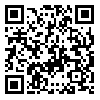Volume 11, Issue 3 (Journal of Soil and Plant Interactions 2020)
2020, 11(3): 43-55 |
Back to browse issues page
Department of Plant Protection, Faculty of Agriculture, University of Zabol, Zabol
Abstract: (2456 Views)
Cucumber root and crown rots are one of the main factors limiting cucumber production. Due to the soil borne nature of causal agents, their chemical control is not only ineffective, but also destroys the environment. Biological control strategies are one of the ways to combat these diseases. This research was conducted to study the biological control of cucumber soilborn diseases. The biocontrol influences of Trichoderma harzianum, T. virens, Pseudomonas fluorescens and Bacillus subtilis against cucumber root and crown rots caused by Fusarium oxysporum f.sp. radicis-cucumerinum, Pythium aphanidermatum and Phytophthora melonis were investigated in the laboratory. T. harzianum, which had the highest rate of the inhibitory growth in the laboratory, was used for the greenhouse studies. The disease severity and yield components of greenhouse cucumber Negin variety were evaluated in different treatments in a completely randomized design with four replicates using the SAS software. Highest percentage of inhibition in dual culture with 45.8% was observed by B. subtilis versus P. aphanidermatum. The results revealed that T. harzianum had the highest and lowest disease controls (32.8 and 18.8 percent) on F. oxysporum f.sp. radicis-cucumerinum and P. melonis, respectively. The treatment related to Trichoderma-inspired healthy plants had the greatest effect on the increase of the yield components in cucumber, while the infected plants with F. oxysporum f.sp. radicis-cucumerinum had the lowest yield. The disease severity index and root fresh weight showed a high correlation in different treatments. Therefore, fungal and bacterial antagonists were successful in controlling the cucumber root diseases.
Type of Study: Research |
Received: 2020/01/22 | Accepted: 2020/11/30 | Published: 2020/11/30
Received: 2020/01/22 | Accepted: 2020/11/30 | Published: 2020/11/30
| Rights and permissions | |
 |
This work is licensed under a Creative Commons Attribution-NonCommercial 4.0 International License. |




